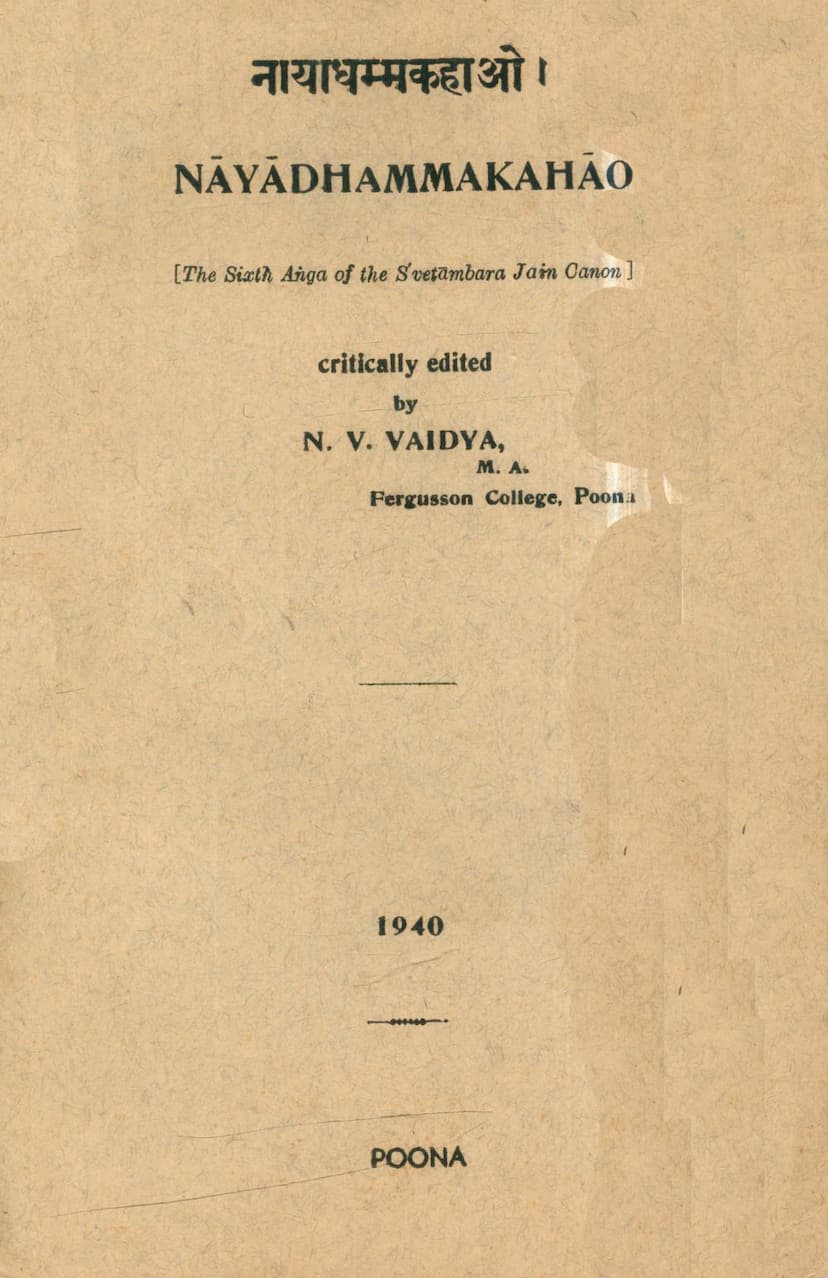Nayadhamma Kahao
Added to library: September 2, 2025

Summary
This is a comprehensive summary of the Jain text "Nayadhammakahao," based on the provided information, particularly the preface and introduction pages from the edition critically edited by N. V. Vaidya in 1940.
Book Title: Nayadhammakahao (नायाधम्मकहाओ) Author: N. V. Vaidya Publisher: N. V. Vaidya Year of Publication: 1940 Significance: The Sixth Anga (limb) of the Svetambara Jain Canon.
Summary:
"Nayadhammakahao" is a significant text within the Svetambara Jain Agamas, identified as the sixth Anga. This particular edition, critically edited by N. V. Vaidya, aims to present a scholarly version of the text based on five manuscripts from the Bhandarkar Oriental Research Institute.
Content and Purpose:
- Nature of the Text: The "Nayadhammakahao" is a collection of narratives and didactic stories. The title itself can be interpreted as "Stories of the Nayaka (leader/guide) and Dharma (duty/religion)." These stories are likely intended to illustrate Jain principles, ethical conduct, and the teachings of the Tirthankaras, particularly Lord Mahavir.
- Critical Edition: The preface indicates that the editor, N. V. Vaidya, undertook this edition two years prior to its publication. Due to the outbreak of war, the scope of the edition was limited to the text alone, with plans to publish notes, an index, and a commentary separately at a later time. The intention was to make the text accessible to scholars working in the field of Prakrits and Jain Literature.
- Manuscript Basis: The edition is based on five manuscripts identified by their Bhandarkar Oriental Research Institute catalog numbers (124, 126, 127, 128, 129). The editor notes that Manuscript C (No. 124) is considered the best due to its uniform, beautiful handwriting and accuracy, and it served as the primary manuscript for the text. Manuscripts A and D were only collated for a few chapters and found to be less valuable. Manuscripts C, B, and E were used for the final text collation.
- Textual Fidelity: Vaidya mentions that most variants are orthographical, with few that alter the sense of the text. This suggests a faithful transmission of the traditional text over time.
- Structure and Content (from the provided sample pages): The initial pages show the text beginning with auspicious invocations and descriptions of places like Champa, the presence of King Konika, and Lord Mahavir's disciple, Aryasam Dharma, and his disciple, Arya Jambu. The excerpt then delves into a narrative concerning Queen Dharini, wife of King Seniya, and her auspicious dream. This dream is interpreted by King Seniya, foretelling the birth of a virtuous son. The text further details the preparation for the naming ceremony and the various arts and sciences the child, named Megha, would learn. The narrative highlights the rigorous training and discipline associated with spiritual progress, including the development of qualities like patience, knowledge, and conduct. The detailed account of the dream, its interpretation, the naming ceremony, and the early life of Megha illustrate the meticulous way Jain texts often present biographical and ethical narratives.
In essence, "Nayadhammakahao" is a foundational text in Jainism, and this edition by N. V. Vaidya provides a critical scholarly work aimed at preserving and making accessible these important Jain teachings and stories for academic study.